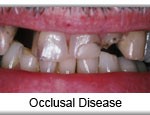Dentistry has a long history with evidence of dental treatment on skulls in the time of the pharaohs. More specifically, there is evidence of successful dental Implantology on a Mayan skull from the time 600 A.D. Pieces of shell are implanted in the lower front tooth region, which appear to have fused with the bone. This evidence would indicate that the treatment was successfully completed on a living human being. The artifact is now in the Peabody Museum of Harvard University. Today, dental implants are made of an alloy of titanium. This is the same alloy used for other prosthetic joints in the body. It is used because of its biocompatibility. There are no reported cases of allergy or rejection of the titanium alloy, and it is non-carcinogenic.
Early pioneers in modern dentistry did meet with some limited success in Implantology; however, it is the period from the 1960’s to the 1980’s where dental implants became a treatment that all dentists could recommend to their patients with confidence. Today’s dental Implantology offers patients a way to replace one or more missing teeth with an artificial root shaped anchor in the bone, and an artificial crown. Success rates for dental implants are very high, approaching 100% in some studies. Of course, each patient’s particular need is different, and the complexity of the treatment is often related to the amount of success one can expect. Patients who have severe systemic disease, smoke heavily, or have a poor jaw bone site for implantation may expect lower success rates. To find out if you are a candidate you must seek a consultation with a dentist who has training in this specialized field of dentistry. Currently, most dentists are involved with dental implant treatment, but not all. If you are going to lose a tooth, dental implants should be considered. Even if your dentist dismisses dental implants, request a referral to a dentist who commonly does this type of treatment for evaluation of your mouth.
Dental implants have a few distinct advantages over conventional dental prosthesis; specifically, fixed bridges and removable dentures. For those who are missing all their teeth and suffer with complete dentures, two to four implants can help to stabilize a loose denture. This type of treatment has been shown to help improve the health, nutrition, and quality of life for those who suffer with complete lower dentures. For others who are missing only one tooth, it offers the advantage of being able to restore that missing part of the body without involvement of the surrounding teeth. Finally, there are those who are missing teeth only in the back of their mouth, and have no adjacent teeth to use as a support for a fixed bridge. A removable prosthesis is usually cumbersome and difficult to get used to, and, has a great psychological barrier. In all of the cases mentioned, dental implants are the treatment of choice, and, in fact, are considered by most to be the current standard of care.
The process of getting dental implants varies from case to case, as does the time to complete the treatment. The basics of the procedure consist of the dentist first evaluating if you are able to get an implant with a proper examination. This will always include proper x-rays and often a CT scan of the jaws. A CT scan allows the dentist to view the area where the implant is to be placed in three-dimensions. Conventional x-rays only allow a two-dimensional view and distort the image to some degree. Placement of a dental implant is a surgical procedure and there are many different techniques to accomplish this. Usually, the dentist will make an incision in the gums to access the bone underneath. The bone is gently prepared to accept the implant and it is usually screwed into a precisely fitting hole.
The implant usually requires a period of undisturbed healing of 3-6 months. During this time the implant is buried under the gums and not visible. After healing the doctor will access the top of the implant again to place a cap on it that will protrude through the gums. The final steps are the taking of dental impressions and fabrication of the artificial post and tooth that will all be anchored by the implant. Even though the previous description might make you wince, it is usually easier than you think. The pain experienced is usually compared to a routine tooth extraction. During the procedure the dentist will anesthetize the area with a local anesthetic, just like when you have a filling. For more complex cases, patients may be sedated in the doctor’s office, or hospitalized for general anesthesia in the operating room. But, the overwhelming majority of cases are done with routine local anesthesia.
Some newer techniques offer patients the opportunity to extract a tooth that is hopeless and place the implant immediately into the extraction socket. Sometimes, these implants may be loaded with a temporary tooth at the same time. In the same way, some patients who will unfortunately loose, or have lost, all of their teeth may have implants placed and a prosthesis placed immediately. This type of prosthesis is fixed in place and offers the stability and secure feeling of natural teeth. Other patients are not able to have their implant and their new tooth attached immediately. In these cases other types of temporary teeth are fabricated. There are many types of these temporary teeth; usually the patient and doctor decide together what the best choice is.
As in all things, patients need to be good consumers in their choice of dental care too. Dental implants are state of the art and offer patients many advantages over previous techniques. Anyone who is missing a tooth, or who needs to have a tooth extracted, should inquire about dental implant
Dr. Cohen is an implant and cosmetic specialist. He has been practicing dentistry for over twenty years, and is the former Director of Dental Implantology at Lutheran Medical Center in Brooklyn, New York. A graduate of Columbia University’s School of Dental and Oral Surgery, he received training in advanced implantology from the prestigious Misch Implant Institute and at New York University’s College of Dentistry.
Gerald Cohen, DDS
40 West Elm Street, Suite 1E
Greenwich, CT 06830


